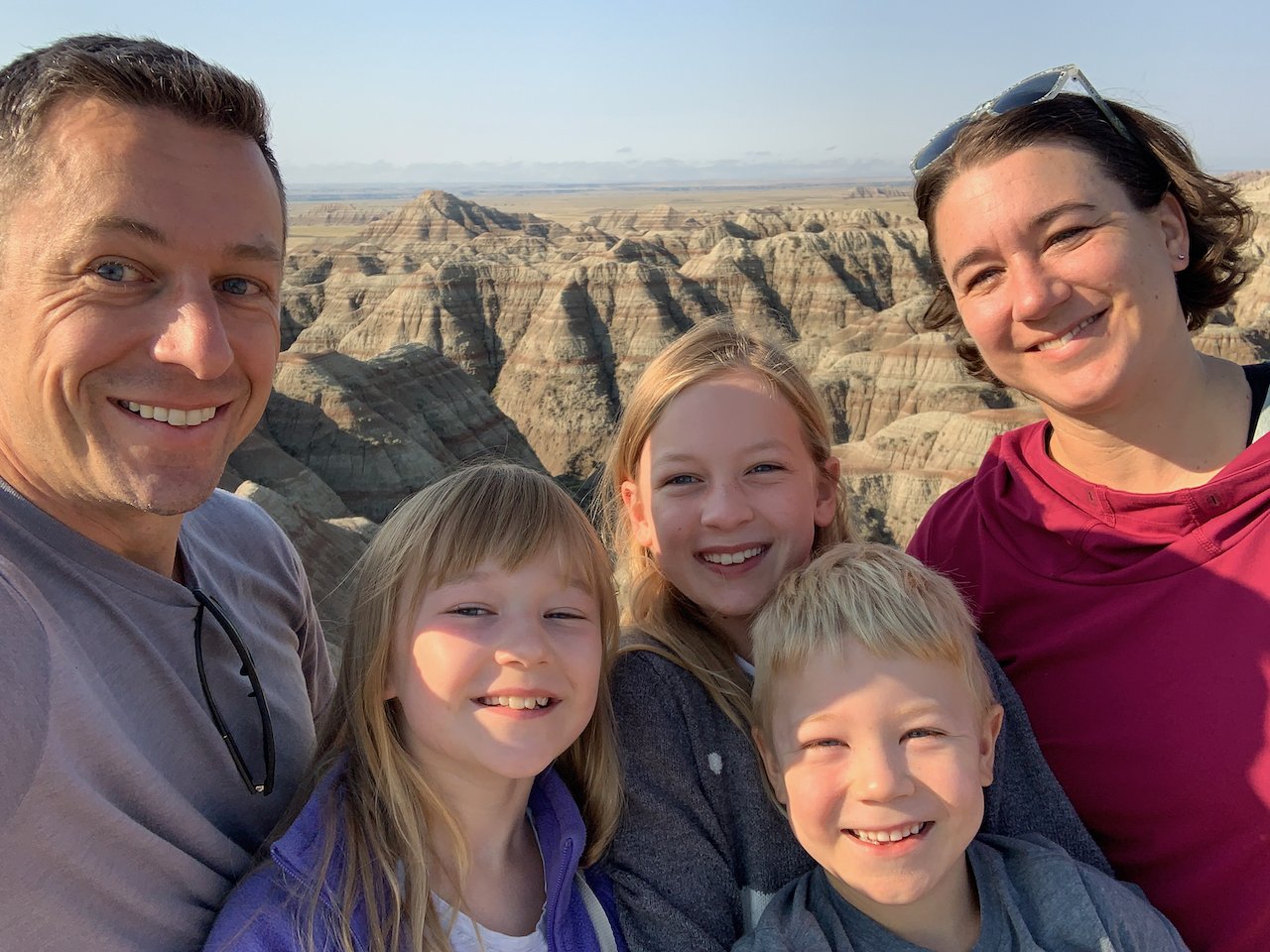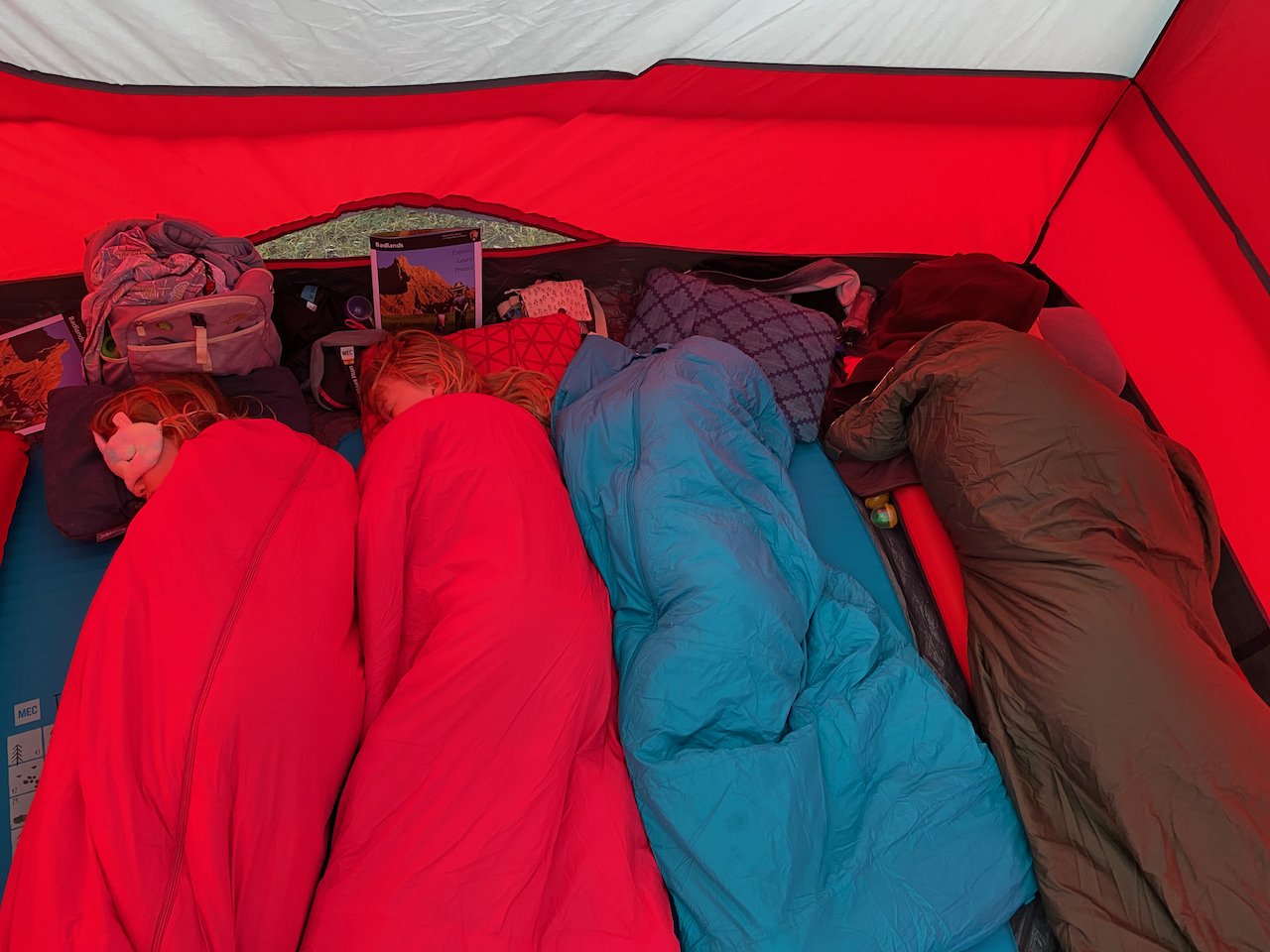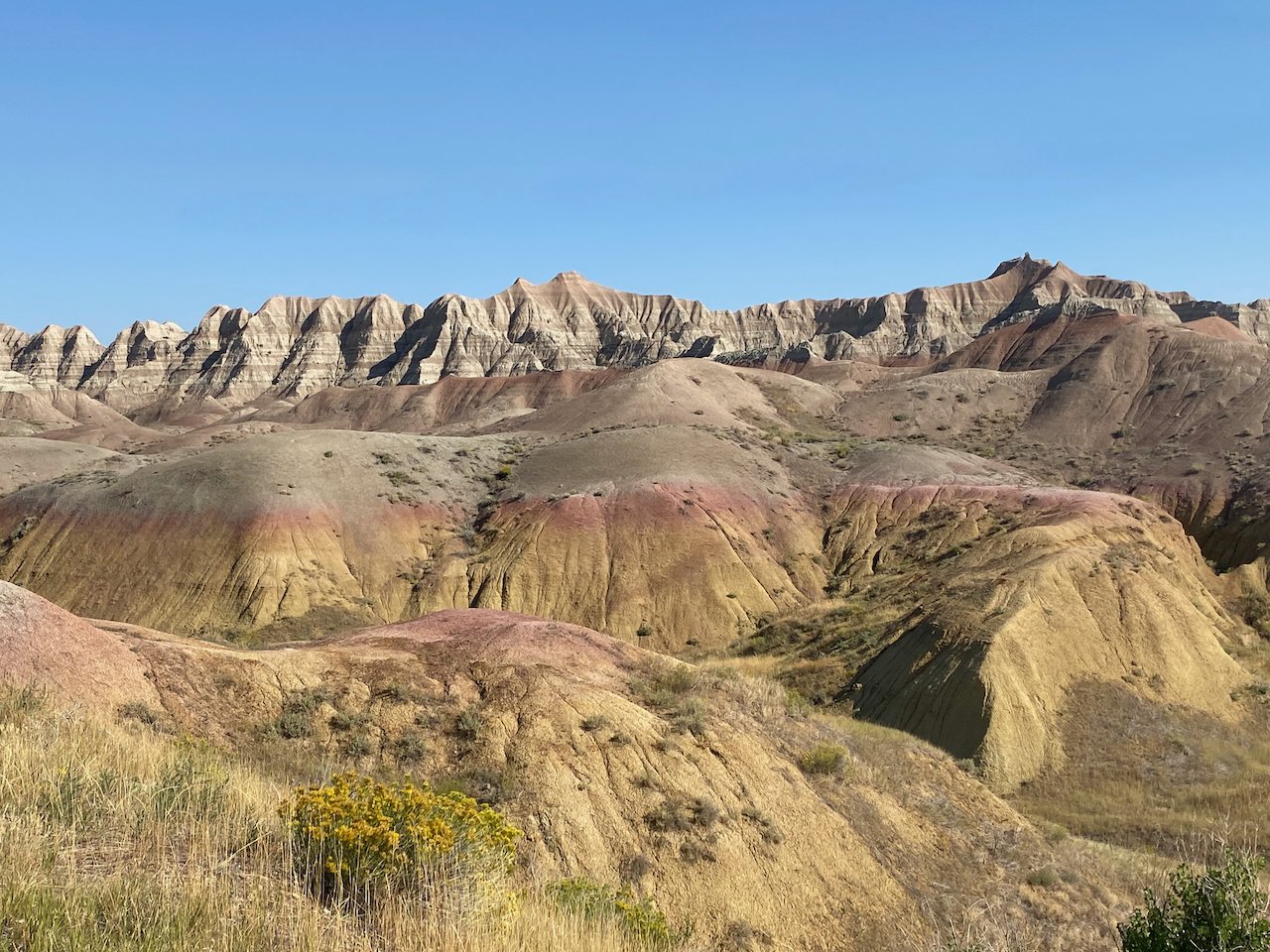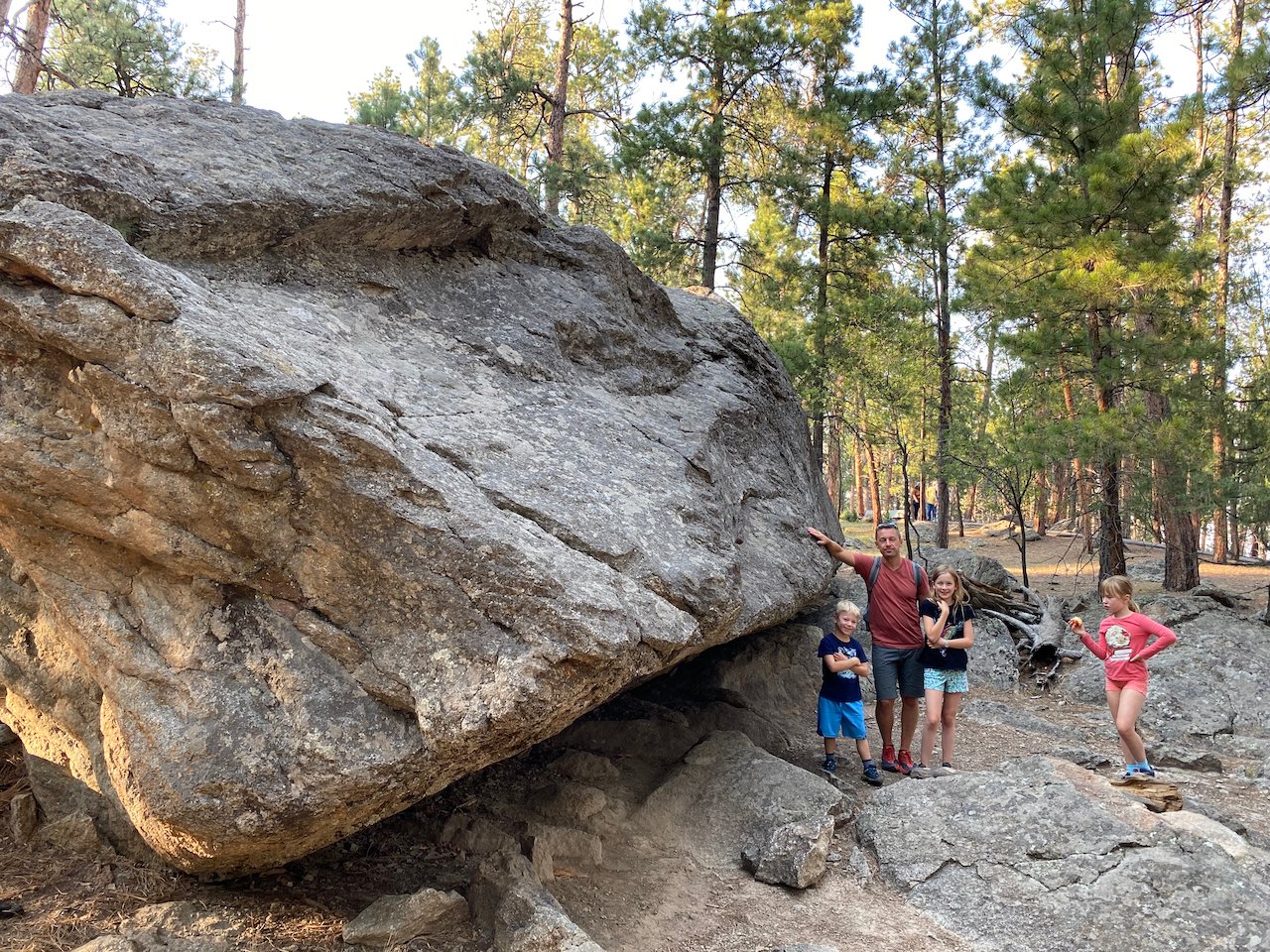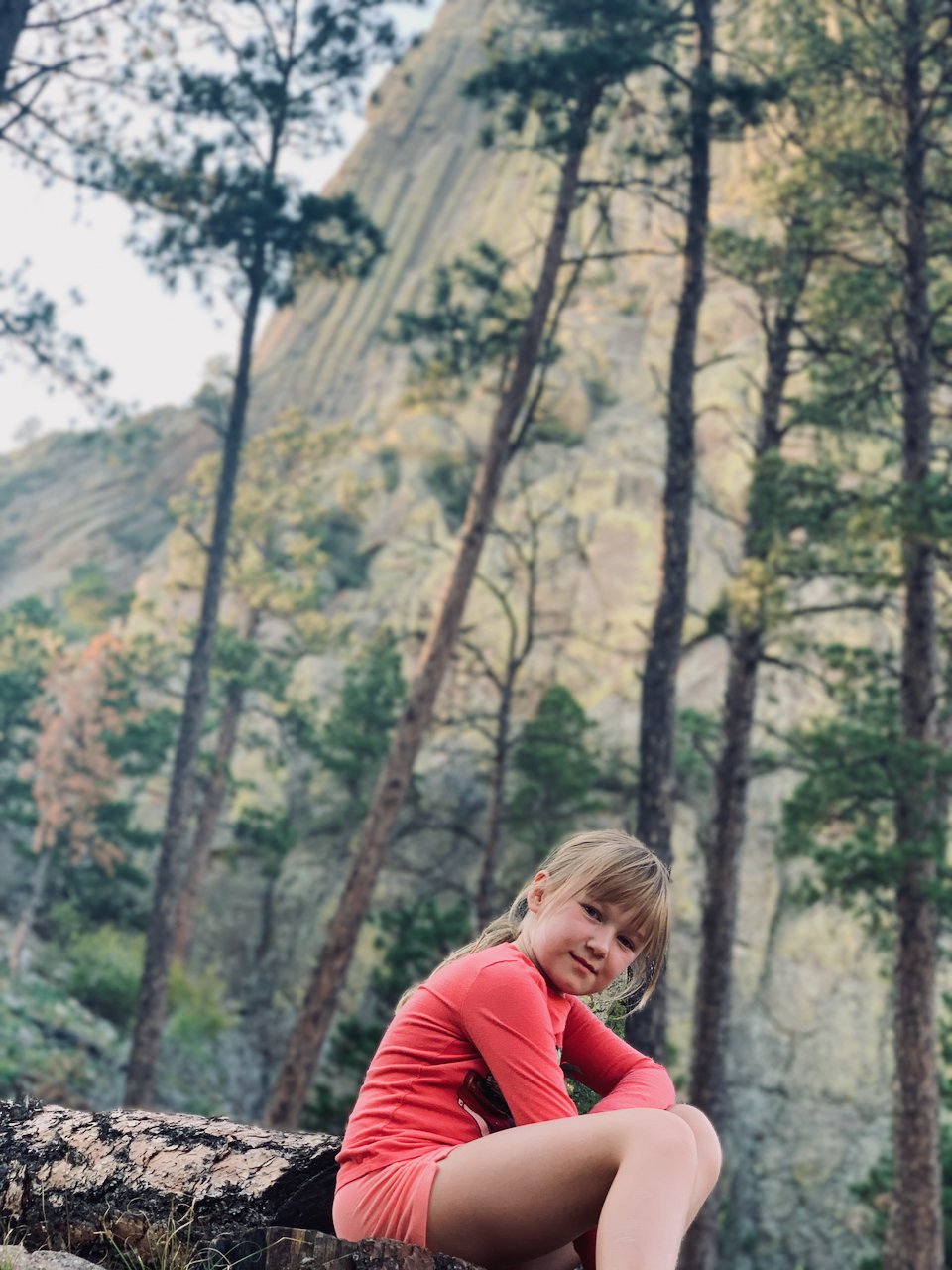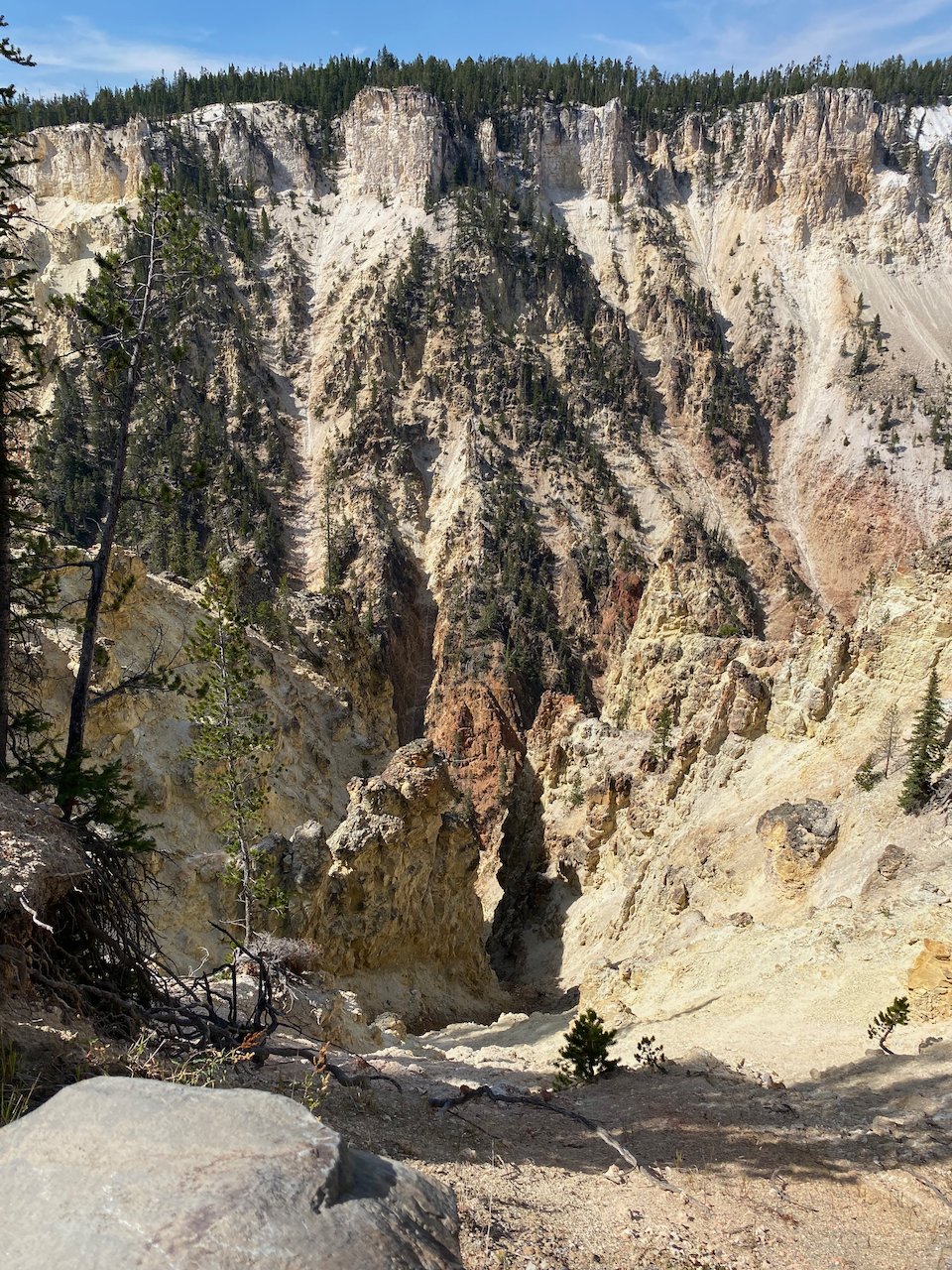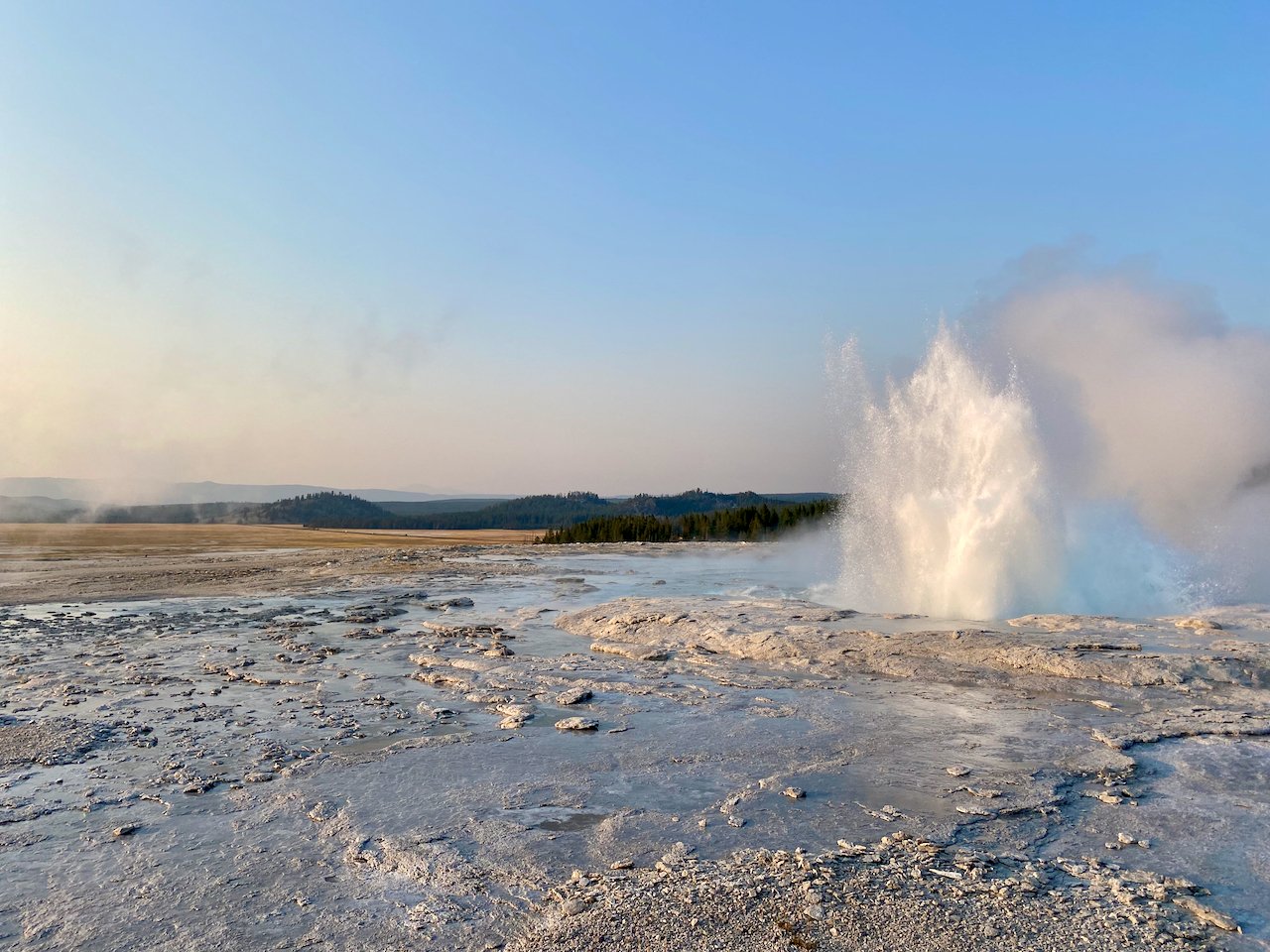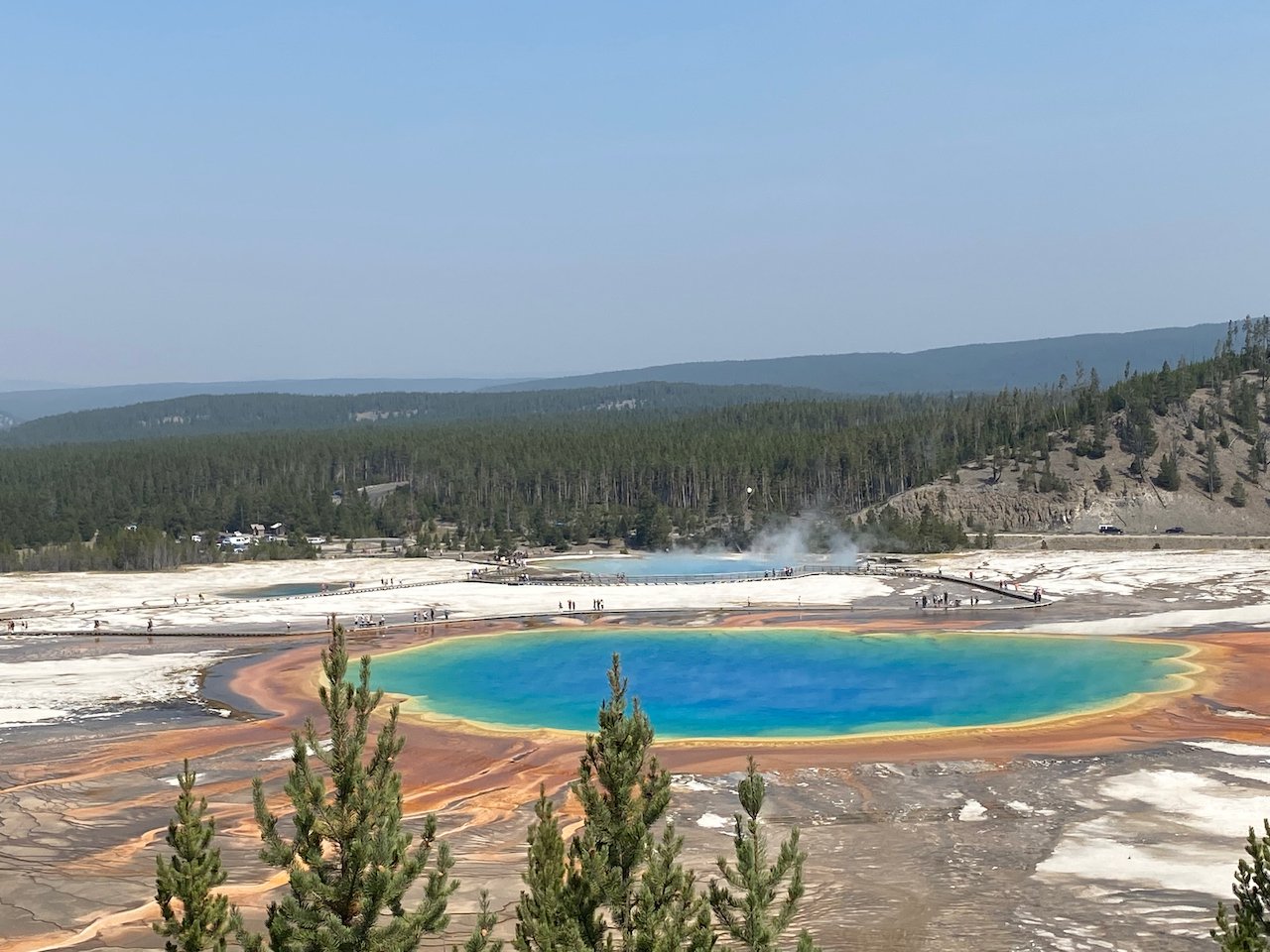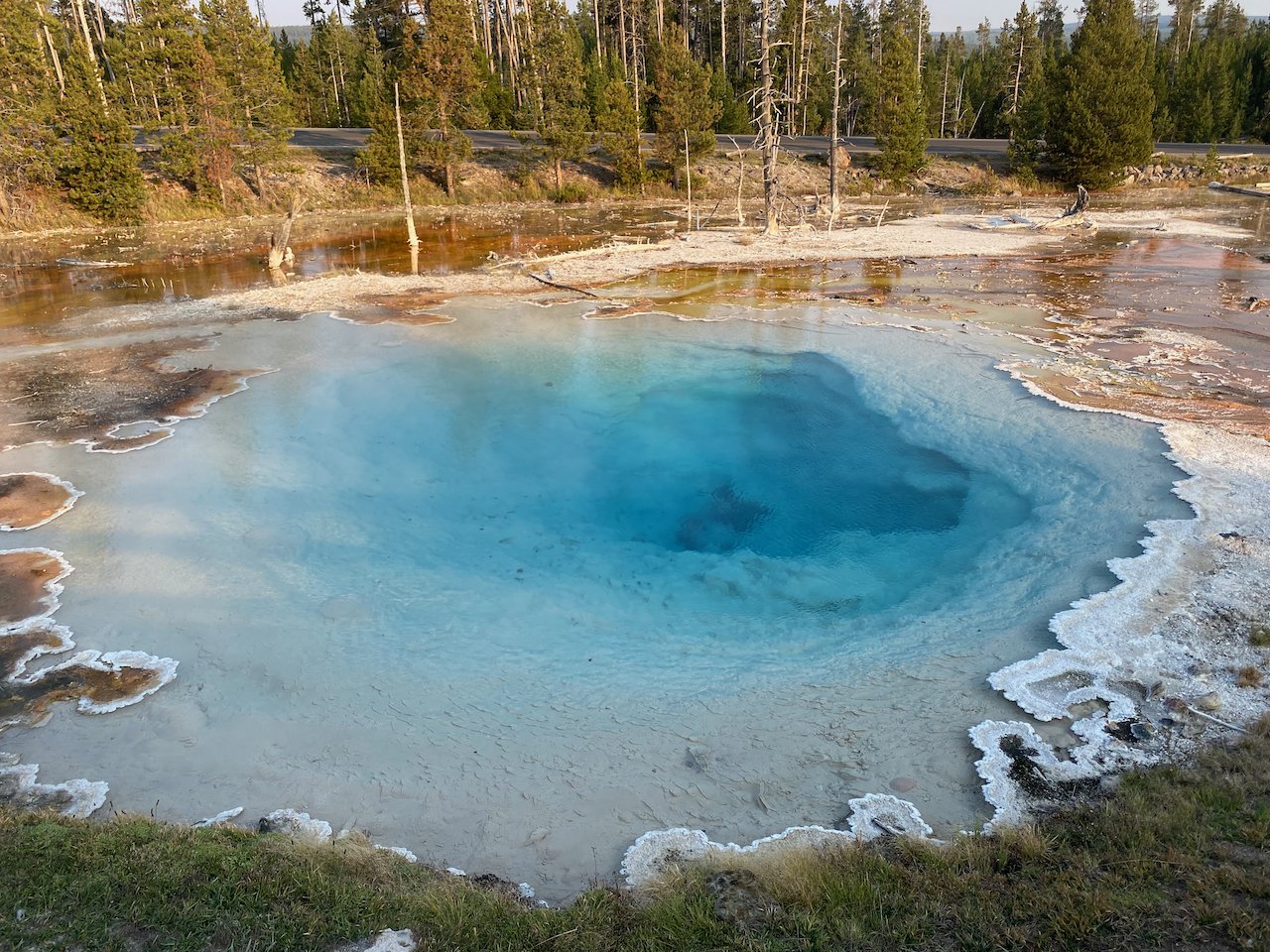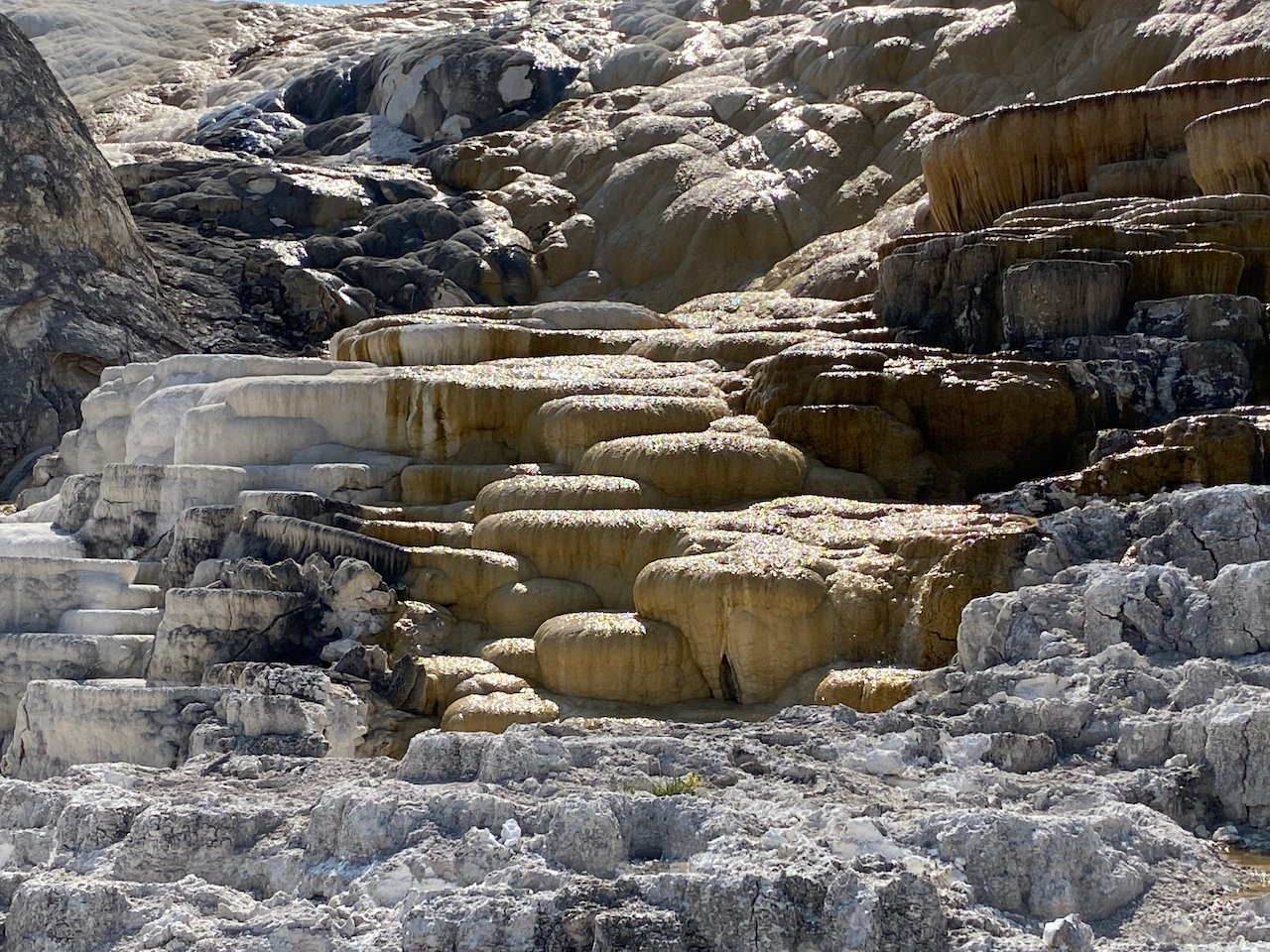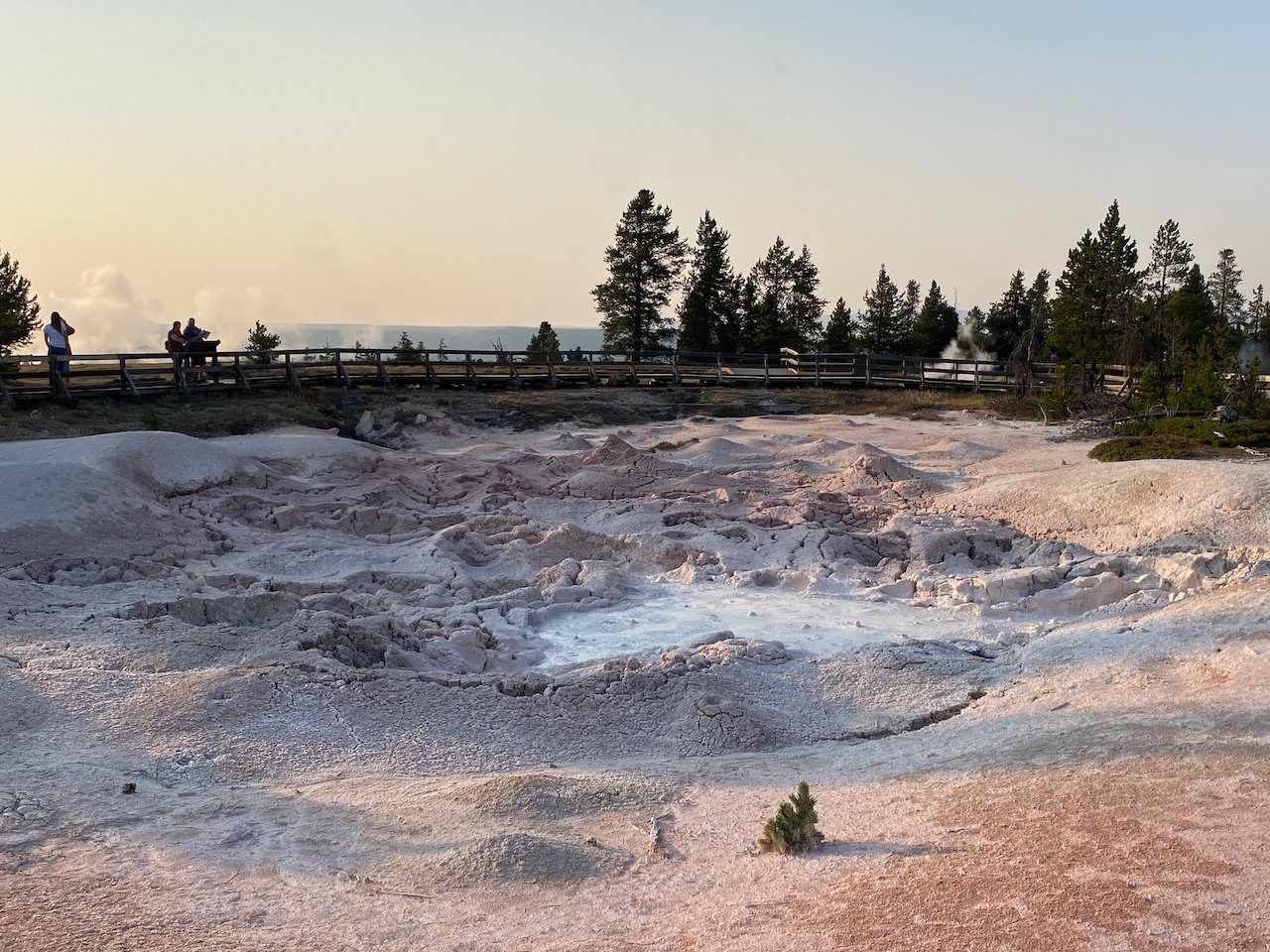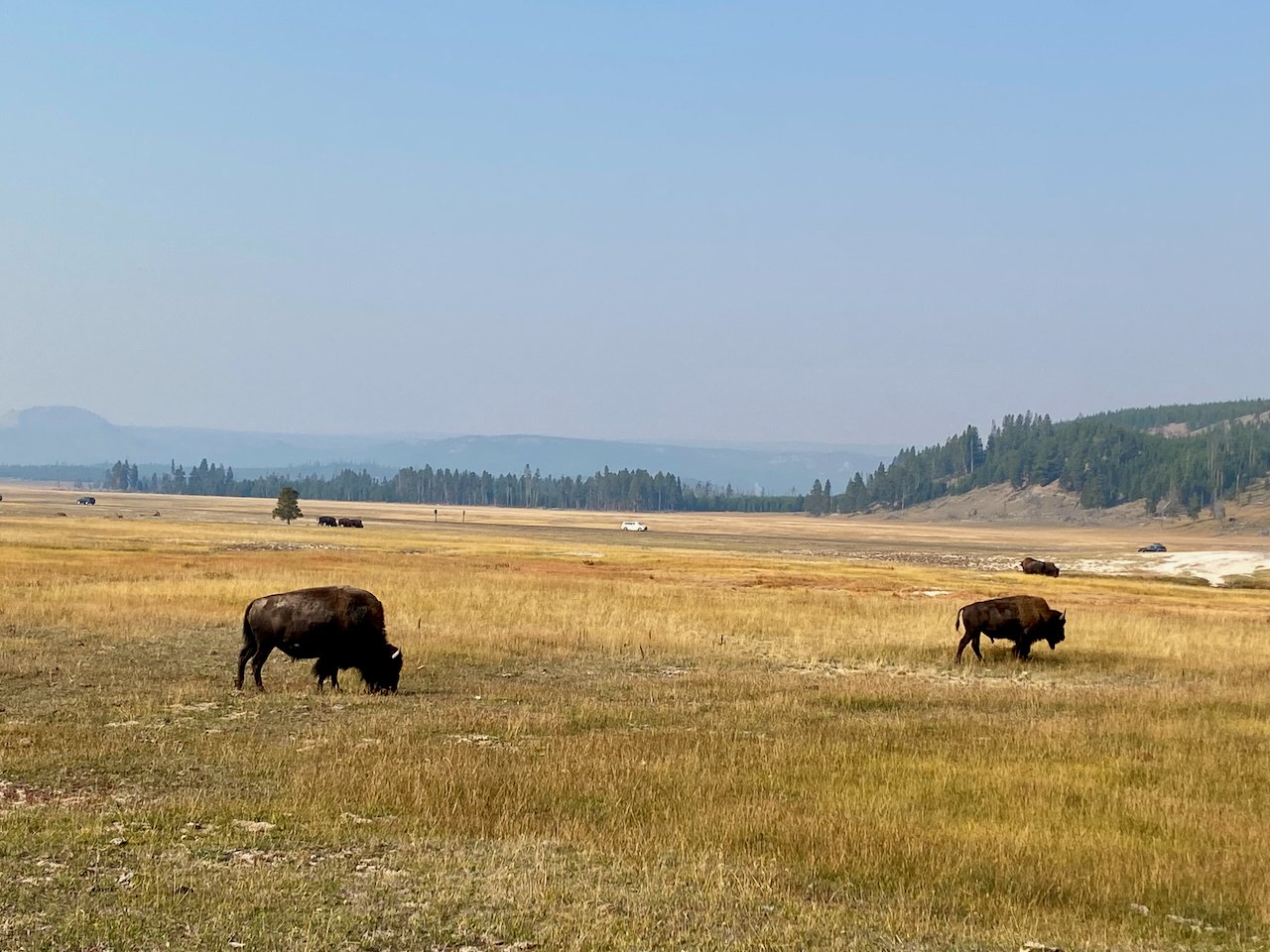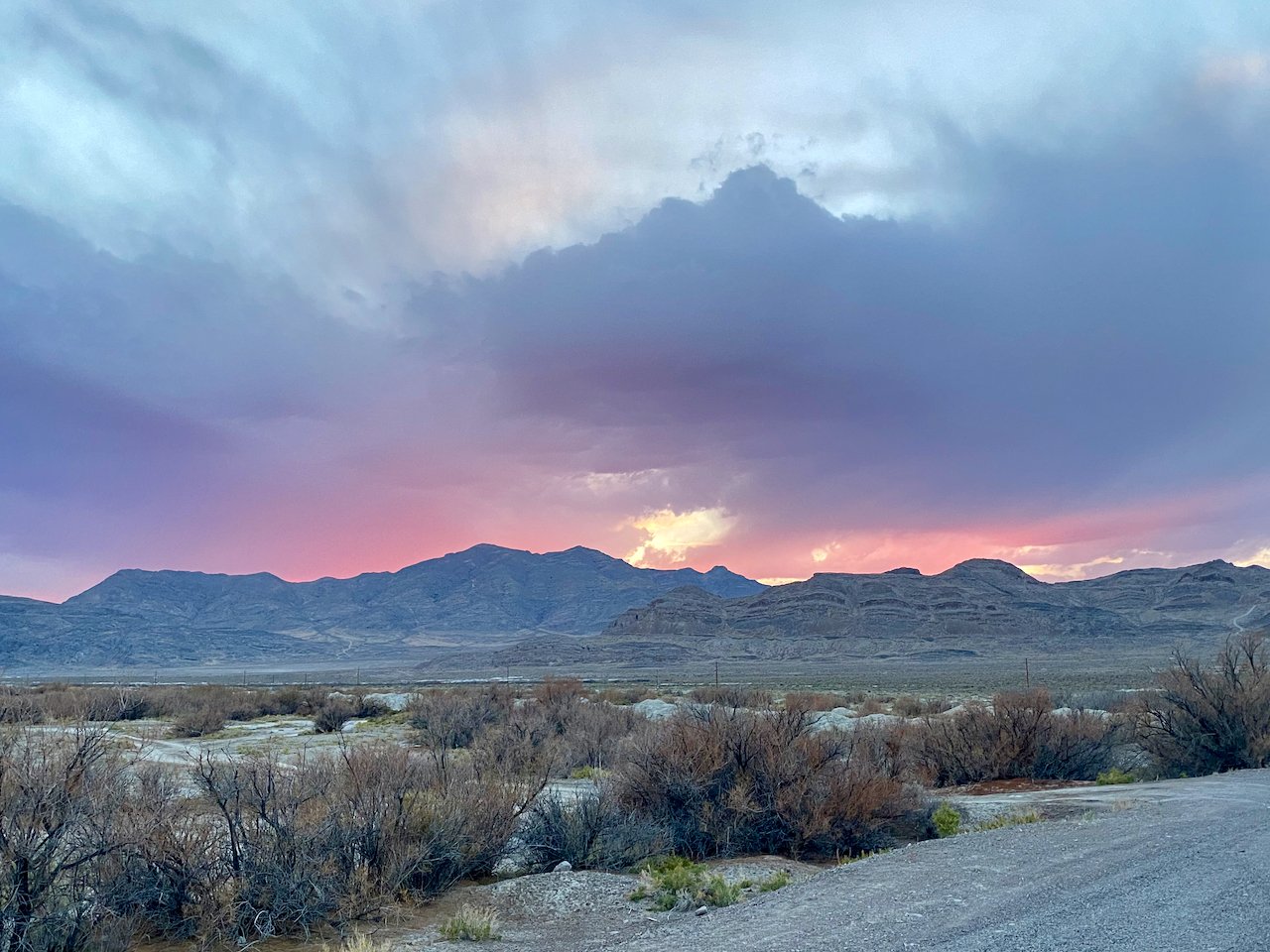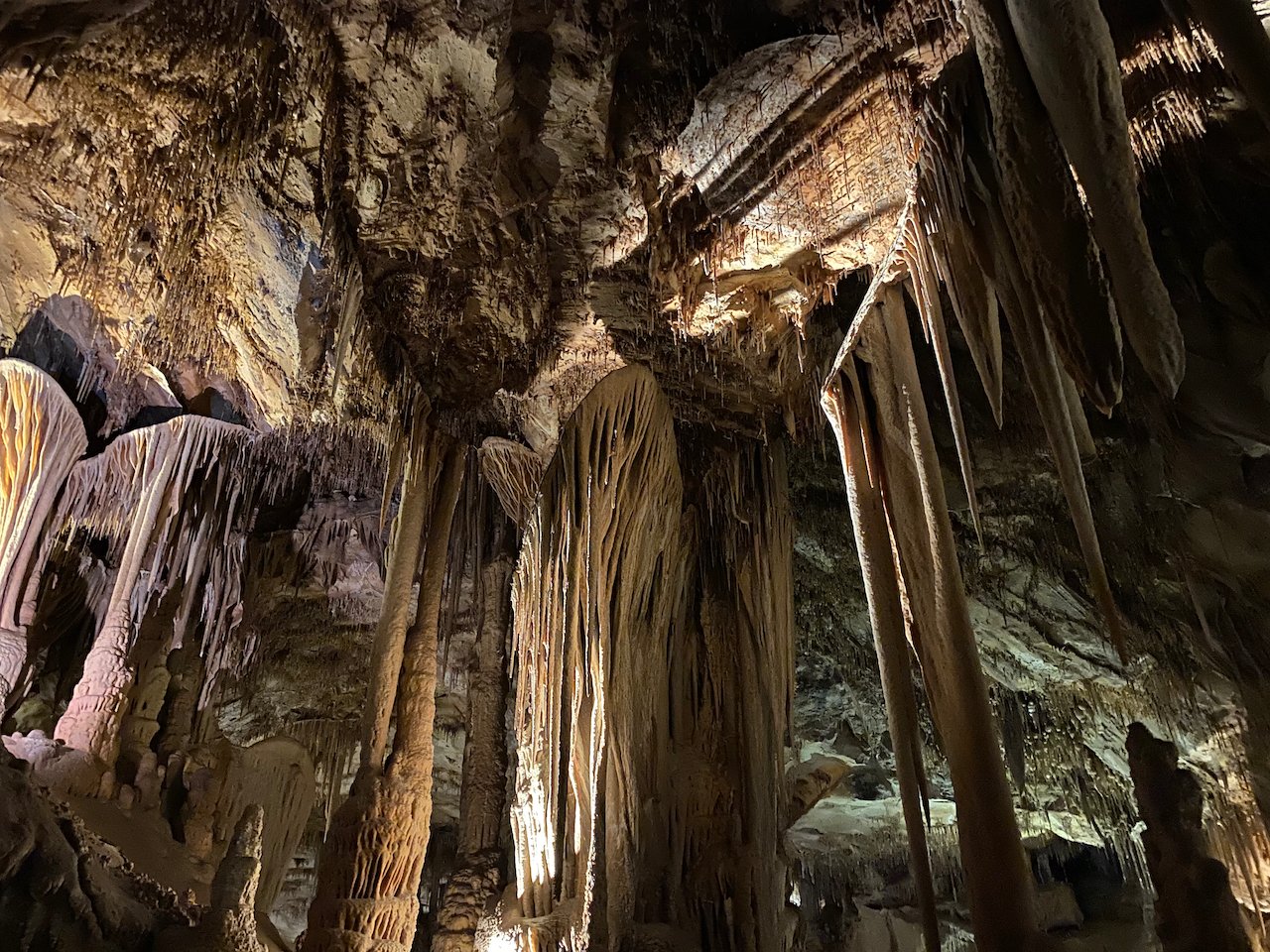It’s hard to explain the feeling of joyful elation when a hard plan comes together. When hours of effort have been poured into a problem and you get to the resolution, it feels wonderful. Erik and I were riding that high of success as we pulled our truck out of the Detroit airport and onto the interstate that would take us to our first US destination. We joked with our kids that we won’t be seeing any more Canadian licence plates and told them to look at the first car that passes us to see what state it is from. Wouldn’t you know, it was an Ontario plate. 😆
We were four days behind our initial schedule so we made a concerted effort to push hard to get to Badlands National Park in South Dakota. As our first US National Park, it set the stage for every park thereafter. I’d have to say that it was a hard one to top. The visitor’s centre was set up with an informative exhibit and also hosted a laboratory in which paleontologists were actively extracting fossils discovered on the park grounds. They availed themselves for any questions from visitors while they worked. Our kids watched with fascination at the detailed extraction work with specialized tools. We used the time indoors to wait out the rain before finding our campsite and setting up for the first time (we really had intended on giving it a trial run…) our tent and shelter. But before leaving the centre, we acquired our first Junior Ranger booklet and badges; and that was the beginning of our relationship with the US Parks Service Junior Ranger Program.
Our campsite was in a wide-open space but came with a built-in table shelter. We soon discovered why shelter is necessary for the Badlands – that sun! The scenery was gorgeous: “orange layered-cake” hoodoo hills, wild prairie grasses, and fluffy white clouds against a light blue sky. Our park adventures included driving the scenic, hour-long viewing road, stopping for short boardwalk hikes into the hoodoos, and attending an evening night sky program. We learned about the creatures that have roamed the area in the past and now in the present. We also learned about the age of each visible layer in the rock. It was very interesting to see each new species discovered in geologically aged rock layers and understand just how long of time passed between each era. We managed to sleep there for two nights, successfully, without any frightening campers. Yay.
“My favourite part was the bright night sky and the funny jokes made by the Ranger who taught us about our galaxy and who showed us Jupiter and Saturn through big, powerful telescopes. We could see the rings and everything!”
While in the area, we visited two popular attractions: Wall Drug and Minuteman Missile National Historic Site. Wall Drug is a store that was established in the town of Wall in early 1930s. Its claim to fame in the early years was offering free, cold water to travellers. We hadn’t heard of it nor planned to visit, but after seeing over 50 billboards advertising the store on our 500km stretch of interstate, we figured it wouldn’t hurt to pop in. It’s a tourist trap extraordinaire, with its cowboy theme and large animatronic TRex, featuring a number of shops, food vendors, and historical memorabilia. As a fan of the movie BIG, I was excited to see a Zoltar booth! Oh, and they still offer free cold water.
The Minuteman Missile Historic Site was very interesting. We weren’t sure how the kids would enjoy the one-hour informative tour but our Ranger host was very animated and full of fun facts that kept them engaged. The historic is one of the central missile control sites. As we learned, this was an underground bunker that had the ability to communicate to other sites, remotely control 9 missiles all located at different places, and act as a backup control centre to other missile squadrons in the US. Our jaws dropped a few times on this tour; the amount of destructive capability that sat fully armed and ready to deploy was unreal, and the scale of civil, electrical, and computer engineering that went into designing the program was impressive especially given that the program began in the 1960s. Once through the tour, we drove 10 minutes away to the site of Missile 09, the only decommissioned missile in this squadron available for public viewing. We peered down a glass roof onto the missile head. It was huge, and it was just the head. There was still 15m of missile underneath! Crikey.
We left Badlands and cut southwest to reach Mount Rushmore for lunchtime. Claire had been excited to see this famous monument. It feels isolated – like it’s tucked away in a quiet corner of a large forest – until you reach the site itself which boasts 6 levels of indoor parking, a huge walkway to viewing areas, shops, facilities, and hiking trails. It was a bit too busy for our comfort so we found a hidden corner and spent a few moments marvelling at the work it would have taken to blast and chisel and smooth those four faces. We got out of there pretty quickly and drove to a small western-themed town and found ourselves a restaurant above a saloon. But the real destination for the day was Devil’s Tower National Monument in Wyoming. We arrived in time to get a great campsite with a view of the tower. We were also able to get into the Visitor’s Centre before closing and the kids got another Junior Ranger booklet. We hiked the 2km loop around the base of the tower seeing many large boulders shaped like hexagonal spires that had fallen from the tower. We were surprised to read that scientists are still undecided on how it was created. “Magma filled an underground chamber, hardened, and then remained standing as all other earth around it eroded away” seems to be the popular theory. However it was created, it sure is an astounding feature to see up close. You can even climb it!
We drove West to Cody, Wyoming where we stopped for two nights to get some laundry done, shuffle some gear, and prepare for our next camping excursion. From there we drove into Yellowstone National Park. It was a beautiful drive through the mountainous Shoshone National Forest to the park’s East Gate, and another incredible drive to our campground. The National Park Services have a number of safety practices around COVID and one is to have the Rangers outdoors at info desks throughout the park instead of only at visitor centres. We spotted one such Ranger tucked into a parking lot and we stopped and got lots of awesome suggestions on the best spots to see during our two and a half days in the park. Yellowstone is 45,000 square km with one main ring-road that takes visitors from feature to feature. We learned to plan over an hour of driving for every quarter of the park – mostly due to the bison herd who often block the road for long periods of time.
I could write a whole blog just on Yellowstone so I’ll spare you the dialog and share our top experiences (basically everything we did). If you want to understand more about why this park is so full of hydrothermal features, the park’s site is a good place to learn more.
Our favourite things to see and do:
1. Grand Canyon of Yellowstone River – this was one of our first stops and it was impressively beautiful. The parking lot was packed showing that it is a top thing to see.
2. Old Faithful and surrounding Geysers – although we only saw Old Faithful erupt, there are several other major geysers that have relatively predictable eruption schedules. It was fantastic to walk the boardwalk around the Old Faithful Basim and see the mouths of so many other geysers and springs. Around sunset we spent some time at the Fountain Paint Pot geyser, which was by far our favourite; the viewing area was close to the action and there were no crowds so we got to really experience the raw power of these water features. Of note, they are all sulphuric and smell like rotting eggs. Yum.
“The geysers were the coolest, but smelly”
3. Hot Springs, including Grand Prismatic – the park is full of parking spots and trails with access to various scenic hot springs. At Grand Prismatic, a trail takes you up to a viewpoint of the whole spring so that you can really appreciate all of its colours. It was a scorching hot day, but totally worth the view! There are so many beautiful hot springs and gorgeous colours, it’s hard to pick a favourite.
Fun fact, the colours are caused by various bacteria living in the extremely inhospitable environment of the springs.
4. Mudpots and steam vents – there are a number of mudpots to see and steam vents are everywhere in the park. In fact, it’s very important that you don’t walk off any of the defined paths as you may step into something that could harm you. We liked watching the mud bubble - so mesmerizing.
5. Wildlife – we were really lucky to see bison herds and also a herd of elk grazing by the stream next to our campsite. It was mating season and the male elk bugle to the ladies. Unfortunately, they bugle at night and I’m a light sleeper. We did not see picas or wolves or bears but we’re told they are often sighted in the park.
6. Nature – the scenery is unbelievable, especially early morning when you can see the steam in the cool morning air from the hundreds of hydrothermal features. It’s a magical place.
After our stay, we decompressed for two nights in Salt Lake City and took advantage of the hotel’s showers, pool, and laundry. On our way out of the city, heading West, we stopped at the Bonneville Salt Flats and stayed a night. We drove out onto the flats with a picnic dinner and had fun feeling the gritty and slippery salt under our feet. The flat salt bed and dry conditions have made the flats the location of many land speed records over the years, in fact, a race was going on the day we visits. The kids found it great fun to dance on.
From Bonneville we drove through the Navada desert valley and over a couple of mountain ranges to reach Snake Mountain and the home of Great Basin National Park. We camped one night at an elevation of 7000ft so we found ourselves in pine trees and cool temperatures instead of desert flora. The reason for our visit, however, was to tour the Lehman Caves. This cave system has existed for millions of years and exhibits evidence of occupation / use from Indigenous Peoples thousands of years ago. The National Park was created to preserve the cave after early tourism left significant impact to the natural features. The tour was so interesting, as were the many stalactites and stalagmites that had formed. Our tour guide also turned off every light to show us true darkness. It was the darkest dark! There is way more to see and do in Great Basin and we’d recommend it to anyone.
“I wish the I could have touched stuff inside the cave, but we weren’t allowed. The walls looked so neat!”
Leaving Great Basin marked our 14th day in the US. It has been a busy 2 weeks but we’re already feeling like we’ve seen a little of everything: mountains, deserts, wildlife, volcanic features, fossils, faces in mountains, nuclear missiles, and dried salt beds. But there was so much more to come!



